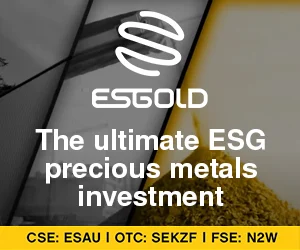In the world of mining and precious metals, two companies stand out for their distinct operations and financial metrics: Jaguar Mining and Impala Platinum. This article delves into a detailed comparison of these two firms, focusing on profitability, volatility and risk, dividends, and valuation. By examining these factors, investors can gain insights into which company may align better with their investment strategies.
Profitability
Profitability is a crucial indicator of a company’s financial health and operational efficiency. In this regard, Jaguar Mining showcases impressive metrics:
Net Margins: Jaguar Mining boasts a net margin of 28.17%, indicating that it retains a significant portion of revenue as profit after expenses. This is a strong indicator of operational efficiency and effective cost management.
Return on Equity (ROE): With an ROE of 26.75%, Jaguar Mining demonstrates its ability to generate profits from shareholders’ equity. This high return suggests that the company is effectively utilizing its equity base to drive earnings.
Return on Assets (ROA): Jaguar Mining’s ROA stands at 17.80%, reflecting its efficiency in using assets to generate earnings.
In contrast, Impala Platinum does not provide specific figures for net margins, ROE, or ROA, making it difficult to assess its profitability in the same terms. This lack of data may raise questions about its operational efficiency compared to Jaguar Mining.
Volatility & Risk
Investors often consider volatility as a measure of risk. Jaguar Mining has a beta of 2.75, indicating that its stock price is 175% more volatile than the S&P 500. This high beta suggests that Jaguar Mining’s stock is subject to significant price fluctuations, which could be appealing to risk-tolerant investors seeking higher returns.
On the other hand, Impala Platinum has a beta of 1.56, suggesting that its stock is 56% more volatile than the S&P 500. While still considered volatile, Impala Platinum’s stock is less erratic compared to Jaguar Mining’s. This may make Impala a more suitable option for conservative investors who prefer lower risk.
Dividends
Dividends are a key consideration for income-focused investors. Jaguar Mining pays an annual dividend of $0.25 per share, resulting in a remarkable dividend yield of 16.7%. This high yield indicates that the company is returning a substantial portion of its earnings to shareholders, with a payout ratio of 49.0%. Such a commitment to dividends can attract income-seeking investors.
In contrast, Impala Platinum offers a much smaller annual dividend of $0.05 per share, translating to a yield of only 0.9%. This lower yield may not be as appealing to dividend-focused investors, especially when compared to Jaguar Mining’s robust payout.
Valuation and Earnings
When evaluating a company’s financial health, gross revenue, earnings per share (EPS), and valuation ratios are essential metrics.
Gross Revenue: Jaguar Mining reported gross revenue of $97.23 million, while Impala Platinum significantly outperformed with $4.62 billion. This stark difference highlights Impala’s larger scale of operations.
Earnings Per Share (EPS): Jaguar Mining has an EPS of $0.50, indicating profitability on a per-share basis. However, Impala Platinum reported a net income loss of -$926.25 million, making it difficult to calculate an EPS.
Price/Sales Ratio: Jaguar Mining’s price/sales ratio is 1.09, while Impala Platinum’s is slightly lower at 1.04. This suggests that investors are willing to pay a similar amount for each dollar of sales for both companies.
Price/Earnings Ratio: Jaguar Mining’s price/earnings ratio stands at 2.94, indicating that investors are paying a relatively low price for its earnings. In contrast, Impala Platinum does not provide a P/E ratio due to its negative earnings.
Overall, while Jaguar Mining has higher earnings, it lags behind Impala Platinum in terms of gross revenue. This discrepancy may reflect the different markets and products each company focuses on.
Summary
In summary, Jaguar Mining outperforms Impala Platinum in seven out of nine financial metrics analyzed. With superior profitability, a higher dividend yield, and a more favorable valuation, Jaguar Mining presents a compelling case for investors. However, Impala Platinum’s larger scale and diversified operations in platinum group metals may appeal to those looking for exposure to a different segment of the mining industry.
About Jaguar Mining
Jaguar Mining, Inc. is engaged in the acquisition, exploration, development, and operation of gold-producing properties in Brazil. Its mining operations include Turmalina, Paciência, and Caeté, with ongoing developments in the Grurupi Project and explorations in the Iron Quadrangle and Pedra Branca Project. Founded in 1984 and headquartered in Toronto, Canada, Jaguar Mining continues to focus on enhancing its operational efficiency and profitability.
About Impala Platinum
Impala Platinum Holdings Limited specializes in the mining, processing, concentrating, refining, and sale of platinum group metals (PGMs) and associated base metals. With operations in South Africa, Zimbabwe, and Canada, the company produces a range of metals, including platinum, palladium, and rhodium. Established in 1957 and based in Sandton, South Africa, Impala Platinum is a key player in the global PGM market.
In conclusion, both Jaguar Mining and Impala Platinum have unique strengths and weaknesses. Investors must weigh these factors carefully to determine which company aligns best with their investment goals and risk tolerance.




